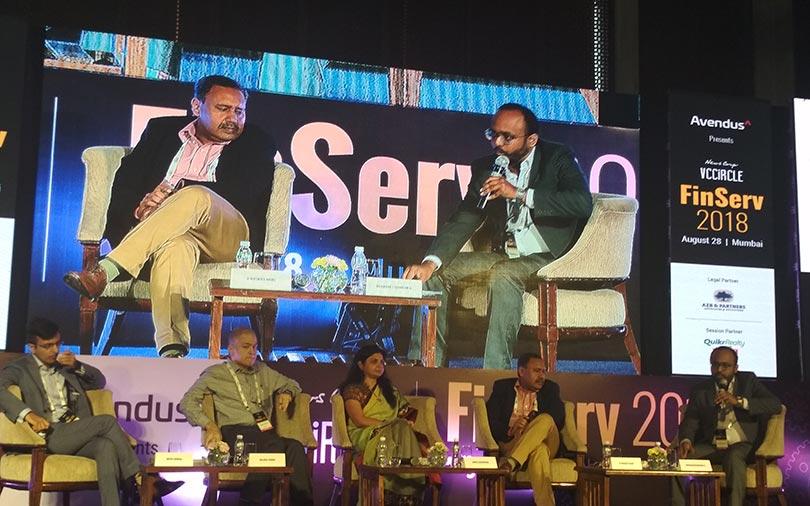Small finance banks must focus on growing low-cost retail deposits and tap into individual borrowers as well as small businesses to expand their operations, panellists at the VCCircle FinServ 2018 summit said on Tuesday.
The small finance banks must also maintain their lending rates at mid-to-high-teen levels to ensure a high return on equity, the panellists said while discussing the challenges these new-age lenders face.
The panel included R Baskar Babu, managing director and CEO at Suryoday Small Finance Bank; Rajeev Yadav, managing director and CEO at Fincare Small Finance Bank; Smita Aggarwal, director of investments at Omidyar Network; and Divya Sehgal, partner at private equity firm True North.
The panel discussed the changes in the banking industry ever since the Reserve Bank of India in 2015 selected10 companies to operate small finance banks. Apart from Suryoday and True North-backed Fincare, other small finance banks include Equitas, Ujjivan and Janalakshmi. Eight of these 10 were previously microfinance institutions while the other two were non-banking finance companies.
The central bank had created this new category of lenders as part of efforts to drive financial inclusion and expand the reach of banking services to people who previously had no such facilities. All the panellists agreed that growth for small finance banks was coming from borrowers who were new to the formal credit market.
The executives said that the small finance banks have a huge opportunity to cater to borrowers who want loans of Rs 25 lakh or below. While this amount is far bigger than a typical loan that most small finance banks offered in their previous avatars as microlenders, this is still smaller than the ticket size of loans that traditional commercial banks offer their corporate borrowers.
Aggarwal said that the introduction of the Goods and Services Tax last year has brought millions of businesses under the tax network and that 90% of these were small or medium-sized enterprises with annual revenue of less than Rs 5 crore. “The GST would leave a verifiable digital trail, which can be used to offer financial services,” she said.
Omidyar Network has invested in about 10-12 fintech companies and has a stated objective of driving financial inclusion.
Apart from the GST rollout, the government’s November 2016 decision to ban high-value banknotes also helped in formalisation and digitisation of the economy, Aggarwal said.
The banknote ban also prompted many bankers to rethink the strategy of expansion by adding physical branches and hiring more people. As a result, many banking institutions ramped up their digital presence and rationalised costs, said Suryoday’s Babu.
On liability-side challenges, both Yadav and Babu said small finance banks currently mobilise most of their deposits from either wholesale clients—such as companies—or urban retail customers. These banks are yet to tap into retail customers in smaller towns as well as their microfinance clients as the saving habit of these groups is volatile in nature.
True North’s Sehgal said the small finance banks, like commercial banks, must strive to increase the share of their current account and saving account (CASA) deposits to benefit from these low-interest-bearing products.
He added that, compared to other lenders such as regional rural banks, local area banks and cooperative banks, the small finance banks are in a stronger position to expand their operations and capture a large share of the banking industry.







